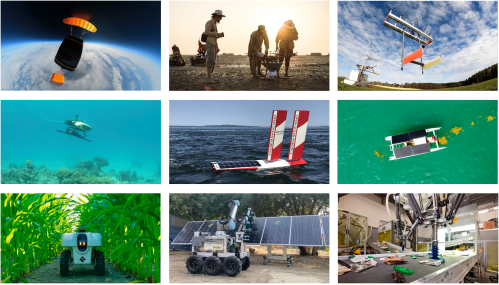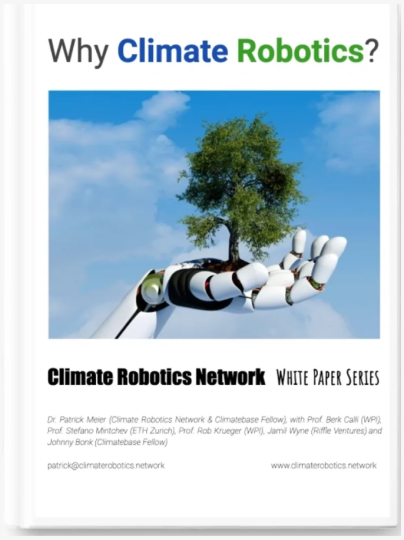The climate crisis is the defining issue of our time, and we need all hands and appropriate tech on deck to mitigate the effects of the emergency and adapt responsibly. The Climate Robotics Network is exploring the potential of robotics to scale existing climate solutions and offer novel solutions to mitigate and adapt to climate risk. Thus far, the evidence suggests that Climate Action needs some level of automation to scale. Learn more in our new study!

Our White Paper draws on concrete Climate Robotics case studies to highlight how existing solutions can augment our capacity to tackle the climate emergency. More specifically, the case studies focus on Mangrove Restoration, Forecasting Extreme Weather Events, Scaling Wind Energy, Regenerating Corals, Collecting Ocean Data, Removing Carbon with Seaweed, Scaling Cover Crop Seeding, Automating Solar Panel Cleaning, and Expanding the Amount of Recycled Waste. These case studies yield essential insights on using robotics in Climate Action. These include insights on Scaling, Adaptation vs. Mitigation, Bits vs. Atoms, Mobile vs. Fixed Robotics, and Sudden vs. Slow Onset Disasters.
Using robotics in Climate Action also presents many challenges and risks, including Top-Down Approaches, Techno-Centric Thinking, Lack of Evidence and Accountability, Financing and Affordability, Safety, Privacy and Governance, Simplicity, Maintenance, Repairability, Sustainability, and last but certainly not least, Environmental Impact.
We unpack and discuss these challenges in detail and note that many are not inherent to robotics alone. The Humanitarian Tech space has faced several challenges, which means best practices and lessons learned already exist to manage these challenges. The Climate Robotics Network is actively drawing on these and other insights to inform the responsible, sustainable, and effective use of robotics in Climate Action.
Still, we face far more questions than answers in this new space; hence the need for a climate robotics network, conceptual framework, research agenda, series of white papers, summit, and knowledge base.

